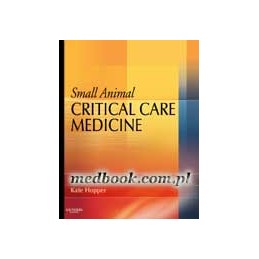Opis
Small Animal Critical Care Medicine is a comprehensive, concise guide to critical care, encompassing not only triage and stabilization, but also the entire course of care during the acute medical crisis and high-risk period. This clinically oriented manual assists practitioners in providing the highest standard of care for ICU patients.
Szczegóły produktu
Indeks
36341
EAN13
9781416025917
ISBN
9781416025917
Opis
Rok wydania
2008
Numer wydania
1
Oprawa
twarda
Liczba stron
1000
Wymiary (mm)
216 x 276
Waga (g)
2480
Part I: Assessment and Triage Part II: Frequently Encountered Problems in the Intensive Care Unit Part III: Respiratory Disorders Part IV: Cardiovascular Disorders Part V: Electrolyte and Acid-Base Disturbances Part VI: Fluid Therapy Part VII: Endocrine Disorders Part VIII: Intoxications Part IX: Neurologic Disorders Part X: Infectious Disorders Part XI: Intra-abdominal Disorders Part XII: Urogenital Disorders Part XIII: Surgical and Postoperative Conditions Part IV: Trauma Part XV: Anesthesia and Pain Management Part XVI: Miscellaneous Disorders Part XVII: Pharmacology Part XVIII: Monitoring Part XIX: Mechanical Ventilation


 Dostawa
Dostawa
 Płatność
Płatność
 Zwroty
Zwroty
